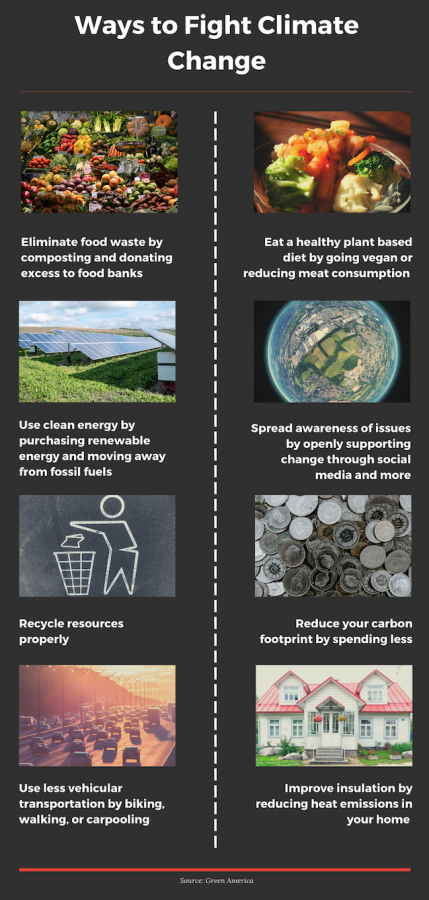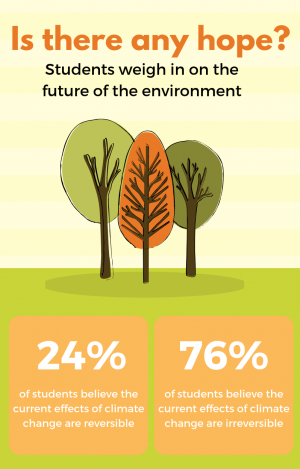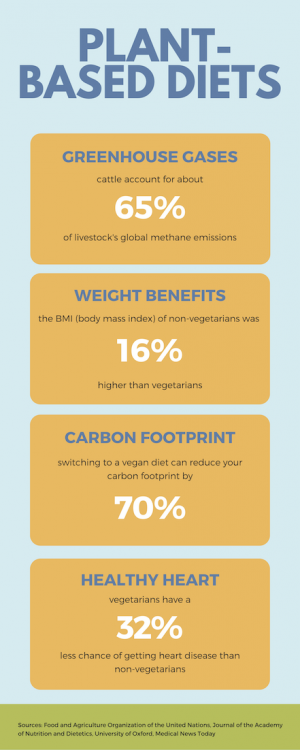United Nations and individuals make efforts to fight climate change
Source: Green America
November 14, 2020
With 2.57 million pounds of carbon dioxide emitted into the air per year, humans have been accelerating toward the planet’s limit, according to USA Today. In 1992, concerns for Earth’s future led to leaders of 193 countries creating the United Nations Climate Change Conferences to work towards a common goal of preventing climate change.
“I definitely believe climate change is the biggest long-term threat facing us today,” senior Niyathi Shah said. “Every year, there are more and more extreme natural disasters like the California wildfires as a result of climate change, and [the fires] are only one of the many ways [climate change’s] effects are already becoming apparent.”
The Climate Action Plan aims to increase awareness of climate change in places such as the UK. In the conference, all 193 countries are expected to come up with new ideas that can alter the way of life, business and economy all in hopes of reversing climate change’s effects.
“The United Nations’ (UN) decision to accelerate climate action is just the start,” senior Sara Awad said. “People can take part in advocating numerous resolutions to fight against climate change as every second passes by.”
The UN’s efforts have prompted and inspired individuals to take on climate change by making changes to their lifestyle every day. Entrepreneurs Gan Golan and Andrew Boyd tackled the issue of climate change by establishing the Climate Clock in New York. According to the New York Times, the clock warns passersby that by 2052, current human actions will induce significant, irreversible damage to the planet.
“The climate clock is a great reminder to all of us that we don’t have much time left,” Shah said. “However, the countdown has already escaped many people’s minds, [even though] the effects [of climate change] will take place.”
To avoid furthering the damage caused by climate change, many take action by developing organizations and clubs like Students for Environmental Awareness Club and the Climate Project in which young adults discuss promoting ways to spread awareness of environmental issues and educate themselves about their surroundings. Students can get involved by either reaching out to these organizations through social media or websites. Alternatively, students can also create organizations and clubs that drive their own communities to make better environmentally friendly decisions. Additionally, others desire for governments and leaders to take on more political action focusing on the climate crisis.
“Though probably unlikely, I want to see another revamped global effort with the UN and The U.S. to combat the problem together because [with combined efforts], I believe we can take on climate change,” Shah said. “It’s very hypocritical to [live in] powerful countries and not take part in such a well-meaning initiative.”





